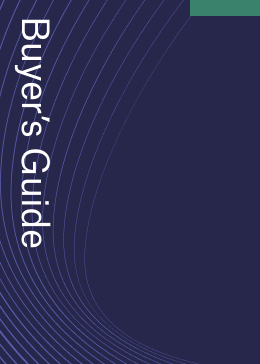Southbank (STH BNK) by Beulah is a mixed-use project being developed in Melbourne, Australia, as the country’s tallest tower at 365m.
It will include private residences, retail areas, commercial offices, public spaces, a six-star hotel and resort and arts and culture space. Amenities will also include a childcare facility and a health and wellness centre.
The project is being developed by Beulah International with an investment of A$2.7bn ($1.9bn) and will generate a stimulus of more than A$1.5bn for the state economy of Victoria.
It will provide jobs for 4,700 people during construction, with 3,250 new direct jobs expected to be generated across multiple industries upon completion.
The project received approval from the Victorian state government in April 2020. The development is expected to be completed by 2029.
The project received the Award of Excellence in the Future Project and Best Tall Buildings categories at the Council on Tall Buildings and Urban Habitat 2023 Awards. It also won Gold in Graphic Design at the Melbourne Design Awards 2022 and Silver for Mix-Use Architecture Design at the International Design Awards.
Location of Southbank by Beulah
STH BNK by Beulah will be situated at 118 City Road in Southbank, Melbourne. The project will be redeveloped on the existing BMW site.
The STH BNK site can be accessed through public transport including trams, trains and buses located nearby. It is also well connected for pedestrians and cyclists to have safe transport access.
Southbank by Beulah design
STH BNK by Beulah will be formed by splitting open a single structure at its core to create two separate skyscrapers. The taller tower will be 356.2m (1,169ft) high and will be used for residential purposes, while the other tower will be 252.2m (827ft) high for mixed-use. The development will have a gross floor area of 318,000m² (3.4 million ft²).
The towers will twist towards each other with their facing glass facades accentuated by a green spine consisting of vertically interconnected platforms, terraces and verandas. The design will enable towers on either side to provide open views.
The positioning of the Green Spine allows for an expansion of the public space on the podium and the extension of greenery onto the towers, and aids in providing orientation towards both the central business district and the botanical garden located on top of the towers.
Facilities
Envisioned as a vertical mini-metropolis, the project will house four collections of private residences, 50,000m² of Grade A commercial office space and a five-star Four Seasons hotel with 210 rooms.
It will also feature 6,600m² of multi-functional conference and entertainment space with a seating capacity of 3,000, a health and wellness area spanning 5,000m² and 3,500m² of gallery space dedicated to arts and culture programmes.
Community activity spaces, a childcare centre, outdoor gardens and rooftop spaces will also be part of the development.
The development will also include a mixed-use podium featuring 30,000m² of world-class experiential retail including a BMW Experience Centre and 7,250m² of public green spaces including the Future Sky Garden located 100 levels above ground.
On top of the public podium, a public park will be framed by tall trees and low fern gardens. Smaller-scale shrub planting will be used for lower and mid-story levels, while winter gardens will adorn the upper levels.
The retail spaces will also have dedicated ways to access balconies and terraces, providing shoppers with a unique shopping experience that differs from a conventional retail mall.
The connection from ground level includes stairs and platforms that will direct the visitors up along the retail and entertainment precincts, giving way to the public garden at the top level of the podium.
The Green Spine details
The Green Spine design for the STH BNK by Beulah project features a series of vertically networked platforms, terraces and verandas. It allows public flows and circulation, linking all the amenities and programmes within the property.
It will be directly connected with STH BNK Boulevard and will welcome people into the building while extending the public realm on the podium. The design also comprises a publicly accessible Future Botanic Garden at the top of the residential tower.
It will be used as a shared cultural platform for the Southbank Arts Precinct. The podium terraces will serve as spaces for temporary performance art, light installations, sculptures and exhibitions. The terraces will also host events such as the Melbourne Art Fair and the National Gallery of Victoria Triennia.
Southbank by Beulah facade and sustainability details
Both the Green Spine facade and the glass facade allow optimisation of architectural parameters, including overshadowing, planting types and screen density, throughout the height of the towers.
The superior passive design of the facade will be reflected in the self-shading features of the Green Spine oriented toward northward and westward directions on the upper exposed faces of the towers. The architectural parameters considered for the spine facade will ensure optimum air quality, thermal comfort and noise absorption and promote the concept of biophilia [the love of living things].
The glass facade is designed to enable balanced window-to-wall ratios, recessed balconies and external shading fins to regulate heat loss and solar gain.
Contractors involved
The project was collaboratively designed by architecture firms UNStudio and COX Architecture.
Grant Associates serves as the landscape architects, while Future City was contracted for cultural placemaking.
Studio Drift is the lead artist. Environmental design consultants Atelier Ten was selected to provide services for sustainability and well-being.
GTA Consultants provides consulting services for traffic and accessibility, while Arup is responsible for engineering services.
The team also includes Norm Li, who provides project visualisations and public relations manager Greenpoint Media.
AECOM and the Future Laboratory are also involved in the project.










